Amateur Deep Sky Imaging from Malaysia
- Thread starter Arcturus
- Start date
You are using an out of date browser. It may not display this or other websites correctly.
You should upgrade or use an alternative browser.
You should upgrade or use an alternative browser.
VERY beautiful photos! Do share more as and when you have them. I really enjoyed looking at them. There's a special calm to it. =]
Thank you, Daniel. I just came back from an expedition last weekend. Weather wasn't too good, but I will be releasing two more images soon.
Stunning pictures only found in astronomy books. Grateful if you could share some details of the gears you used such as brand of telescope, adaptors, synchronized motor drive system, etc. Many thanks!
Thanks! I have briefly mentioned some of the gears I used in the previous page (but I guess I didn't quite specify what they were). Anyhow, there are three main parts, namely the telescope tube, equatorial tracking mount, as well as the camera. Standard mounting for DSLRs would be to couple a T-ring (which is brand-specific to the DSLR) and a T-adapter (which connects the T-ring to the telescope). This essentially makes the telescope work as a large prime lens, a term known as 'prime focus'.
The telescope tube is mounted onto a german equatorial mount using tube rings and a dovetail. The mount points to celestial north and will rotate in a single axis to track the stars in the sky to compensate for Earth's rotation. There are also more specific things like the use of autoguiding to improve the accuracy of tracking, as well as the application of correcting elements for certain scope designs which are more susceptible to optical errors.
With that said, the telescope tube that I use is the TPO 8" f/4 imaging newtonian with a modified (IR filter removed) Canon EOS 400D, mounted on the Losmandy G11/Gemini 2 German Equatorial Mount. Hope this helps!
Here are two images from last weekend. Due to less than ideal weather, I only acquired data for two objects.
Leo Triplet
The Leo Triplet is a small cluster of galaxies located roughly 35 million light years away. Here, the three primary component galaxies are depicted in a single frame.
Data integration of 11x7 minutes. Total exposure of 1h 17min. TPO 8" f4, Canon 400D.
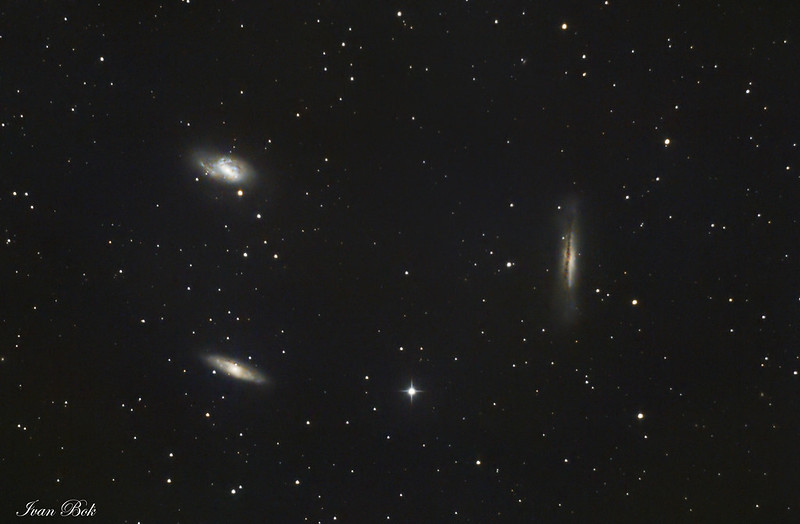
M8/M20
M8 and M20, also known as the Lagoon and Trifid Nebulae respectively, are diffuse nebulae located in the constellation of Sagittarius. They are easily visible even from light polluted ares, and make popular targets fof amateur astronomers.
Data integration of 5x15 minutes. Total exposure of 1h15min. Borg 71FL, Canon 400D.
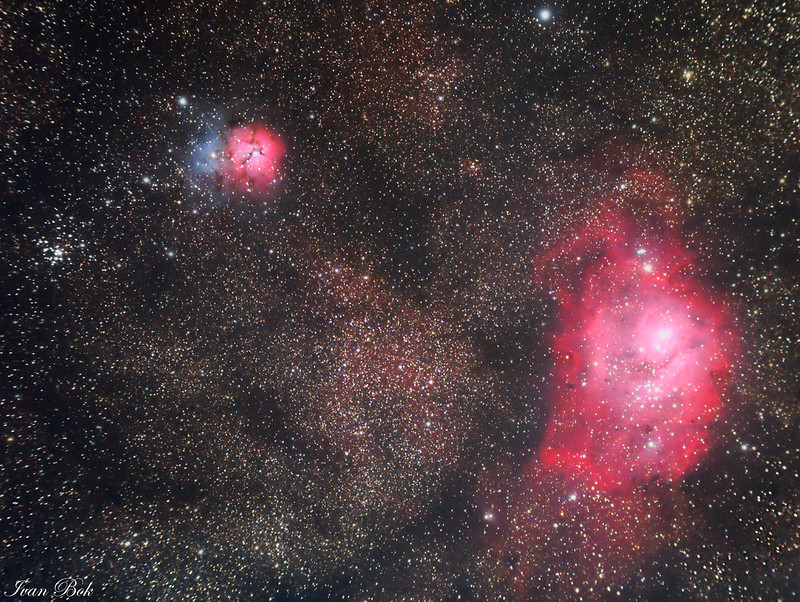
Leo Triplet
The Leo Triplet is a small cluster of galaxies located roughly 35 million light years away. Here, the three primary component galaxies are depicted in a single frame.
Data integration of 11x7 minutes. Total exposure of 1h 17min. TPO 8" f4, Canon 400D.

M8/M20
M8 and M20, also known as the Lagoon and Trifid Nebulae respectively, are diffuse nebulae located in the constellation of Sagittarius. They are easily visible even from light polluted ares, and make popular targets fof amateur astronomers.
Data integration of 5x15 minutes. Total exposure of 1h15min. Borg 71FL, Canon 400D.


2 hour cumulative HDR exposure of the Lagoon Nebula in Sagittarius, imaged from Mersing last weekend on 20th June.
Here's another image of an object taken during the same night as the Lagoon Nebula image above. It is a 1.5h cumulative exposure (18x300sec) of the Veil Nebula, which is a supernova remnant located in the constellation of Cygnus.


Last edited:
Hi folks!
As an update, here is a collection of winter objects that I have photographed over the past few months. All of the images include both local data from Singapore (shot through filters to remove the light pollution), as well as colour (RGB) data from Malaysia (Mersing and Malacca). They were all taken using a 372mm FL f/6.2 telescope and an astronomical CCD camera.
The Orion Nebula
Total Exposure Time: 6.5 hours
HaRGB Composite
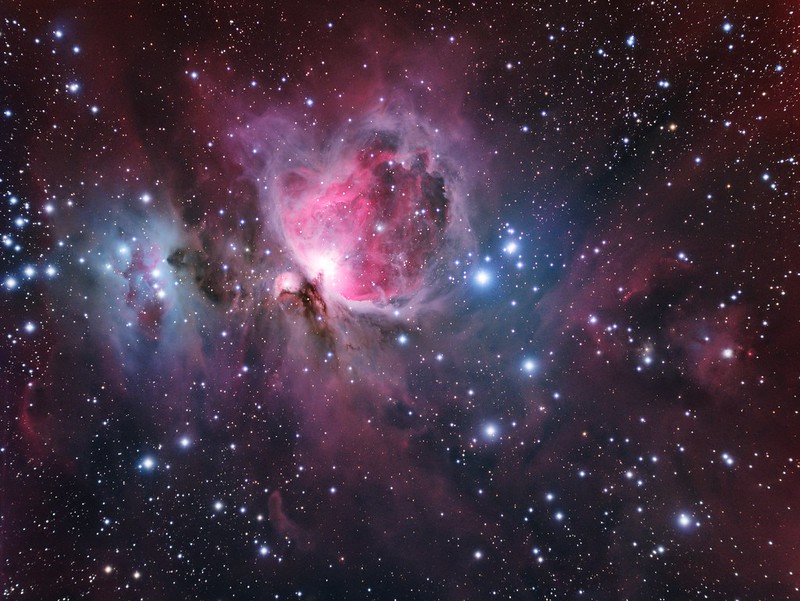
The Horsehead and Flame Nebula
Total Exposure Time: 3h 15min
HaRGB Composite
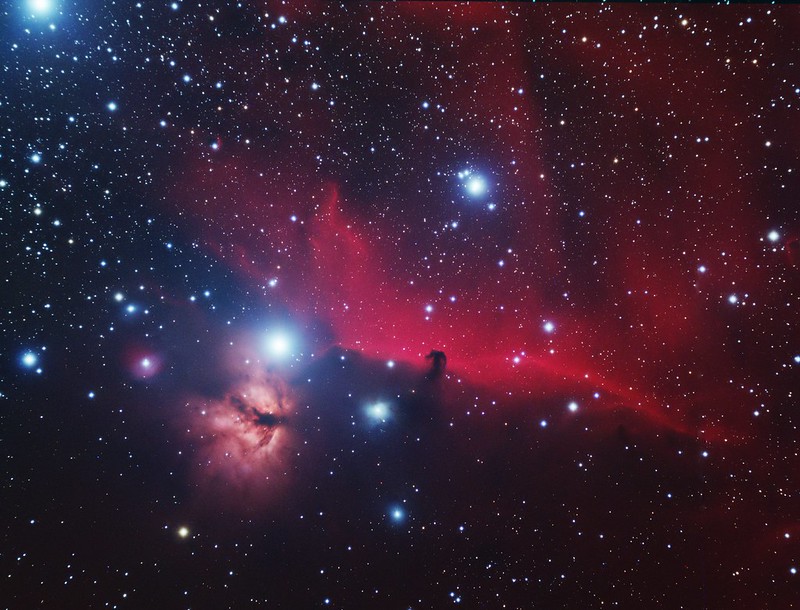
The Rosette Nebula
Total Exposure Time: 3.0h
HOORGB Composite
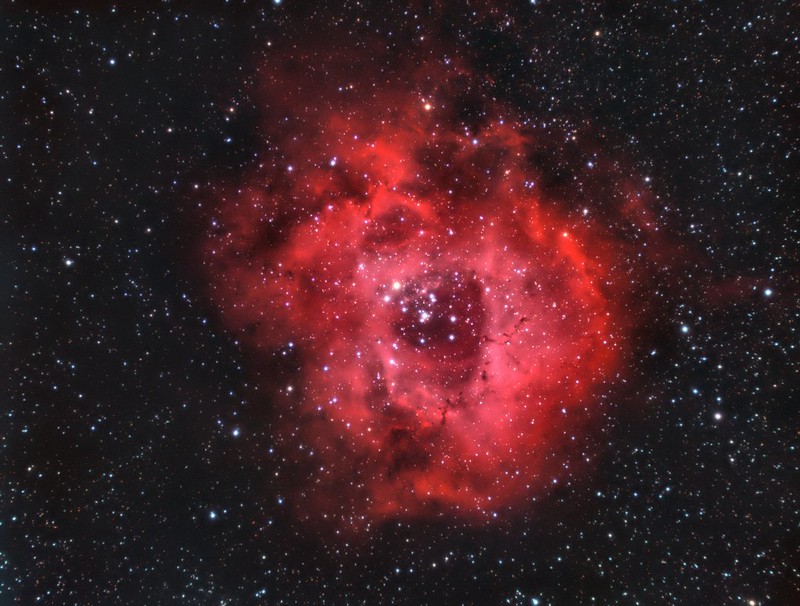
Thanks for looking!
As an update, here is a collection of winter objects that I have photographed over the past few months. All of the images include both local data from Singapore (shot through filters to remove the light pollution), as well as colour (RGB) data from Malaysia (Mersing and Malacca). They were all taken using a 372mm FL f/6.2 telescope and an astronomical CCD camera.
The Orion Nebula
Total Exposure Time: 6.5 hours
HaRGB Composite

The Horsehead and Flame Nebula
Total Exposure Time: 3h 15min
HaRGB Composite

The Rosette Nebula
Total Exposure Time: 3.0h
HOORGB Composite

Thanks for looking!
Similar threads
- Replies
- 0
- Views
- 79
- Replies
- 0
- Views
- 140
- Replies
- 0
- Views
- 33
- Replies
- 0
- Views
- 32
- Replies
- 0
- Views
- 63


